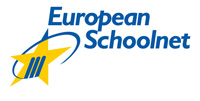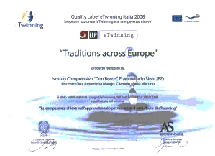Al tempo dei nostri nonni, nessuno aveva l’acqua corrente in casa, per cui occorreva approvvigionarsi recandosi alle fontane pubbliche: I recipienti utilizzati erano diversi a seconda della quantità d’acqua che si desiderava portare: c’era “ù varrilë “, “u gùmmëlë“, ” ‘a јáschë“,‘”a langèllë” ecc.
Con questo lavoro abbiamo voluto ripercorrere questa esperienza ,nel nostro centro storico, utilizzando i recipienti dell’epoca e con alcuni bambini vestiti con il caratteristico costume locale.
At our grandparents times, nobody had flowing water in his home, therefore they needed to supply going to the public fountains: the containers they used were different in order to the quantity of water they wanted to get: there was “ù varrilë “( the barrel), “u gùmmëlë” ( the jar), ” ‘a јáschë” ( the flask),“‘a langèllë” ( the earthware jug) etc.
With this work we wanted to go along this experience, in our old town centre, using the containers of that epoch and with some children dressed up in the local traditional costume.
Abbiamo selezionato alcune delle immagini che proponiamo ai nostri partners.
We selected some of the images we propose to our partners.

I bambini posano per una foto ricordo presso una casa tipica dell’epoca.
The children are posing for a photo to keep as a souvenir near a typical house of that epoch.

Portiamo a casa l’acqua con “ù varrilë “, ( contenitore a doghe di legno) e con “u gùmmëlë“ ( contenitore in terracotta).
Let’s get home the water with the “ varrilë “ (wooden stave container) and the “gùmmëlë” (earthenware container).

Una sosta per dissetarsi.
A stop to quench our thirst.

In posa presso una delle caratteristiche fontane pubbliche nel nostro centro storico : “‘a fundænë ‘i San Gësèppë”.
In pose near one of the typical public fountains in our old town centre: “‘a fundænë ‘i San Gësèppë” (the saint Joseph’s fountain).

Ora riempiamo “u gùmmëlë“.
Now let’s fill the “ gùmmëlë“.

Ecco i caratteristici costumi dei nostri nonni e, rispettivamente,“u gummëliĉĉhјë“,“‘a langèllë” ,“u gùmmëlë“e “ù varrilë “.
Here are the typical costumes of our grandparent’s and, respectively, the“ gummëliĉĉhјë“ (the small jar), the” langèllë” ( the jug ) ,the “gùmmëlë” ( the big jar) and the “ varrilë ” ( the barrel).
Mario e la classe 4^B – Scuola Primaria “A. Ciancia” – Francavilla in Sinni (PZ) – Italia



































Recent Comments